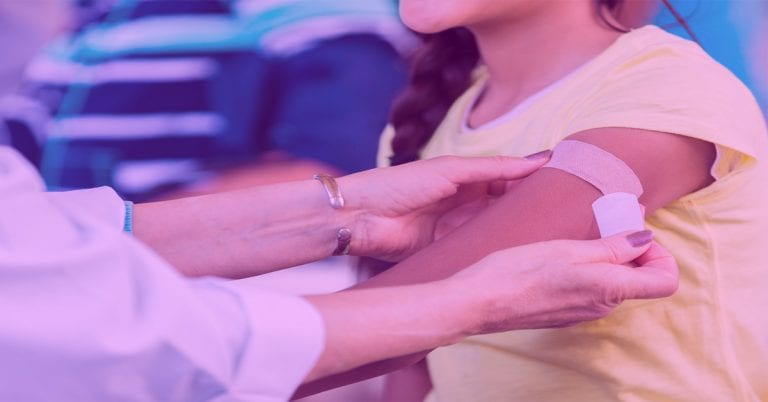Dr. DIY: Does a Bandage Really Help Reduce Scarring?
March 1, 2017

“Is that going to scar?” It’s a question medical professionals hear often, and there is no easy answer. Whether or not you end up with a scar depends on many different factors, like wound care and infection. However, there are a few techniques you can use at home that will reduce the risk.
What is a Scar?
Scarring occurs as your body works to repair a tear in tissue. You have internal scars that you are not even aware of, in fact. When there is damage, the body will attempt to build up the tissue to make it stronger so it won’t happen again.
A scar is actually tough fibrous tissue put in place to protect that area from further injury. The right first aid, though, can lower the risk and eliminate that need.
Why a Bandage Helps
In a sense, a bandage can help prevent scarring. Covering up the wound keeps bacteria and debris from entering the skin break and causing an infection. Ideally, you will keep the bandage in place for the first few days, changing it when necessary to ensure the wound stays clean. A bandage is usually not enough to prevent a scar, though.
What Other Wound Care Tricks Will Prevent Scarring?
The goal of wound care is to keep the site clean to prevent infection. If a wound becomes infected, the body recognizes the danger and uses a scar to make the tissue stronger to avoid further infections. Follow these tips:
- Cleaning – If possible, hold the wound under cool running water to remove any debris. You may need to use sterilized tweezers to pick out anything sticking to the injury site. After rinsing, use a clean washcloth and a mild soap to clean the wound. You’ll want to avoid irritants at this point such as hydrogen peroxide or iodine. They are effective if you see signs of infection, but otherwise just make things worse.
- Cover it up – After a good cleaning, the goal is to keep your wound slightly damp and covered. Apply a small amount of antibiotic cream or ointment to the area and then cover it with a sterile bandage. This process goes a long way in preventing the formation of scar tissue.
As your wound starts to heal, it will scab over and probably itch. Do your best to leave it alone– disturbing the scab can sometimes lead to a scar. Proper wound care is always important, so be sure to see a doctor for high-risk injuries like animal bites, cuts that are deep, or cuts that won’t stop bleeding. Excessive bleeding, especially if appears to go with your pulse, should be treated in a hospital emergency department.
There is no guarantee a wound won’t cause a scar, in part, because no two people heal exactly the same — some are simply more prone to scarring than others. However, your best chance at preventing one starts with great wound care.
